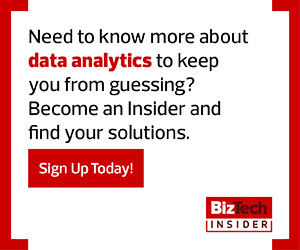Think of Data as a Strategic Asset
According to VolunteerHub, a volunteer management solutions vendor, the first step to becoming a data-driven nonprofit is to acknowledge data as a strategic asset. Nonprofit leaders should consider how data can provide insights into factors including:
- How their audience is engaging with their online content
- The demographics of their online audience
- The ROI of individual fundraiser events
MORE FROM BIZTECH: Discover why digital transformation starts with the data center.
Make Data Transparent and Accessible
Employees should have access to donor-centered metrics, internal financial data and other information that could give them better insight on how to improve fundraising. During this step, nonprofit leaders may seek out tools that create dashboards where staffers can track historical data, as well as begin holding regular review meetings where important metrics are discussed.
Distinguish Between "Vanity" Goals and Measurable Goals
Nonprofit leaders need to know what they’re trying to achieve with data initiatives. It’s easy to perceive “likes” and “shares” as indicators of success, but experts say leaders need to distinguish between so-called “vanity” metrics and those that actually measure tangible effects.
One example of a vanity metric is the number of “likes” a nonprofit receives after posting a video to Facebook. While this metric could be a gauge of awareness or even social sentiment, it doesn’t provide any insight into whether people shared the video or how much time they spent watching it.
The average amount of time people spent watching the video, however, is an actionable metric, because it can inform future efforts. For example, if the average person only watched half of the video, the nonprofit may make its next video half as long to aim for maximum audience engagement.
MORE FROM BIZTECH: See how data analytics can benefit nonprofits.
Create a Data-Friendly Culture
Data-oriented hiring doesn’t necessarily mean bringing in a team of trained data scientists. But new employees should buy into the idea that the thoughtful use of analytics is important to the organization’s success. Organizations should build a culture that encourages data-driven decision-making, with leaders demanding quantitative analysis to back up assertions and rewarding staff for testing out hypotheses before implementing new initiatives.











